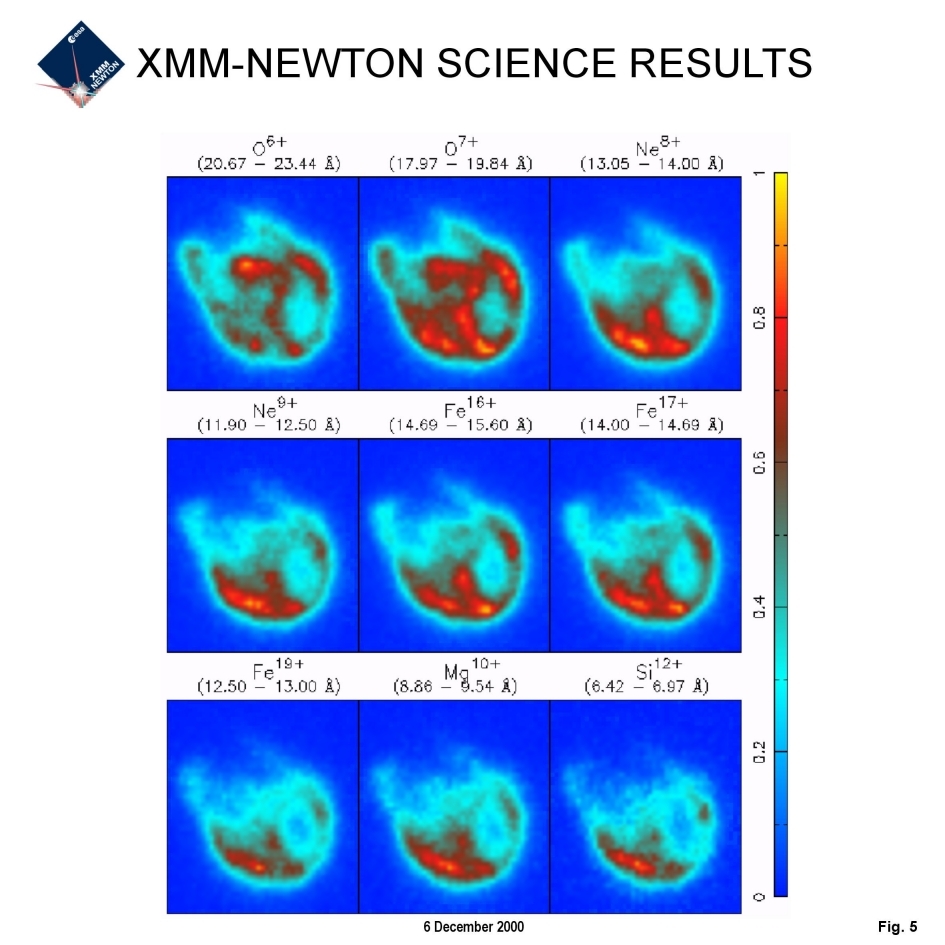
 Credit: E. Behar, Columbia Univ., NY, USA & ESA
Credit: E. Behar, Columbia Univ., NY, USA & ESA
The Universal Distribution Center
Complex elements are cooked up inside massive stars, i.e. stars with more
than about 5 times the mass of the sun. These elements are distributed to
the rest of the galaxy when the stars explode as supernovae (and more
complex elements can be formed in the explosion). Thus supernovae are the
centers of distribution of all the important elements necessary for complex
chemistry and life. By studying X-ray emission from supernovae remnants,
those clouds of ejecta produced when the exploded star material collides
with the surrounding galactic gas and dust, astronomers are able to examine
in detail how these elements are distributed. The image above of the
supernova remnant N132D in the
Large Magellanic Cloud was obtained by the EPIC camera on
the XMM-Newton X-ray observatory.
This image shows X-ray emission produced by important signature elements
like oxygen (O), silicon (Si), neon (Ne), iron (Fe) and magnesium (Mg). In
each sub-image, the bright regions show where each ion of each particular
element is most abundant, and indicates how the stellar explosion has
spread material non-uniformly to rest of the galaxy near the star.
Last Week *
HEA Dictionary * Archive
* Search HEAPOW
* Education
Each week the HEASARC
brings you new, exciting and beautiful images from X-ray and Gamma ray
astronomy. Check back each week and be sure to check out the HEAPOW archive!
Page Author: Dr. Michael F.
Corcoran
Last modified December 4, 2001


